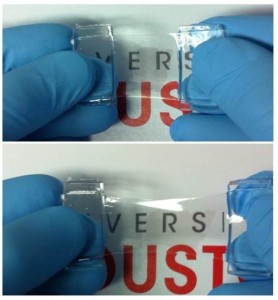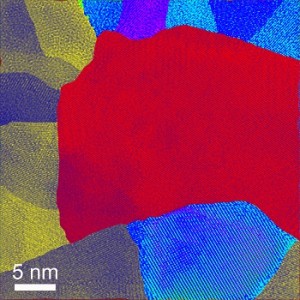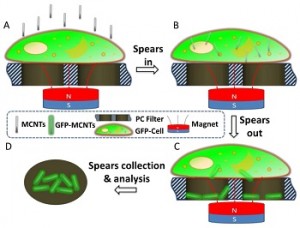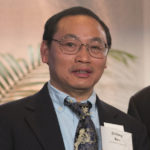TAMEST Blog Series: 2014 O’Donnell Awards Recipients (1st Post by Dr. Zhifeng Ren)
In anticipation of the upcoming announcement of the 2015 Edith and Peter O’Donnell Awards recipients, we are highlighting the importance of our O’Donnell Awards program and its impact on the program’s past recipients in medicine, engineering, science, and technology innovation, as well as the importance of scientific research to Texas. We have invited 2014 O’Donnell Awards recipients to contribute a post to this special blog series.
The first post in this series was written by Dr. Zhifeng Ren, recipient of the 2014 O’Donnell Award in Science. Dr. Ren has made seminal contributions to five scientific fields: carbon nanotubes, thermoelectrics, zinc oxide nanowires, high temperature superconductivity, and molecule delivery/sensing. He was the first to grow aligned carbon nanotube arrays in large scale, make nanostructured bulk thermoelectric materials with much improved properties, and synthesize hierarchical zinc oxide nanowires.
View Dr. Ren’s presentation at the TAMEST 2014 Annual Conference.
The 2015 O’Donnell Awards recipients will be announced on Tuesday, December 9, 2014, through a video trailer on the TAMEST website.
Dr. Zhifeng Ren, Recipient of the 2014 O’Donnell Award in Science
By Zhifeng Ren, Ph.D.
Receiving the 2014 O’Donnell Award in Science was great, an important reminder for me and everyone in my research group that good work will eventually be recognized. It has made us work even harder and driven us to want to achieve much more in the years to come.

Fig. 1. High transmittance and large stretchability of flexible transparent electrodes. (Top) High transmittance is shown by the clear letters below the electrode, and (bottom) the electrode is stretched at least 100%.
In just the 10 months since the awards were announced, we have published about 30 papers in peer-reviewed journals and filed 10 patent applications, all as we continue our work on high-performance thermoelectric materials and other devices for efficient thermal energy conversion. In addition, we have also started several other exciting programs, such as extremely stretchable conducting transparent electrodes for potential applications in wearable optoelectronic devices, along with work in novel nano materials and our work to create devices for drug delivery into and out of cells, work which can be used to interrogate the activities inside the cells and ultimately may provide a new method for killing cancer cells.
The O’Donnell Awards are an important acknowledgment of scientific and technological achievement in Texas. But the state still has a long way to go to reach its potential as a center for science and technology, and the economic benefits that would come with that.

Fig. 2a. Microstructure and thermoelectric properties of a newly developed thermoelectric material MgAgSb. This shows the nano size of the grains.
Everyone knows that the United States has had the largest economy in the world for decades. The question is, why? The answer is that the United States has the most advanced science and technology because of the continuous governmental support for both the basic research and practical technologies programs, in addition to a good academic system and a stable political system. These programs have discovered numerous basic science phenomena and also invented many technologies, and simultaneously educated many people over the last century. These talented people come from all over the world, drawn here to pursue their American dream.

Fig. 2b. Microstructure and thermoelectric properties of a newly developed thermoelectric material MgAgSb. This shows the thermoelectric figure-of-merit (left) and its energy conversion efficiency (right) in comparison with the state-of-the-art bismuth telluride.
In my own lab at the University of Houston, I have found both the financial support – for both financial assistance for graduate students and for facilities – and importantly, through the collaborations with colleagues, to be crucial. It has been especially important to work with researchers from the UH Cullen College of Engineering, and about one-third of my Ph.D. students come from the college, in the fields of mechanical engineering, materials science and engineering, electrical engineering, and chemical and biological engineering. These students and their advisors view the projects my group is carrying out from different angles, allowing us to solve challenging issues by bringing different approaches to the problems.

Fig. 3. Molecular extraction by spearing cells. (A) An external magnetic field drives multiple wall carbon nanotubes (MCNTs) toward a cell cultured on a polycarbonate filter. To indicate the molecular extraction, the cell is transfected for GFP overexpression beforehand. (B) MCNTs spear into the cell under magnetic force. (C) MCNTs spear through and out of the cell and extract GFP. GFP-carrying spears are collected in the pores of a polycarbonate filter. (D) GFP representing the intracellular signal molecules can be used for analysis of individual pores.
But even though the United States has been at the center of science and technology internationally for many years, Texas clearly has not been at the nation’s center of science and technology. That honor has gone to Massachusetts and California, which have the largest number of top research universities and probably most technology-driven startups. Boston alone has seven of the nation’s top 50 research universities, and California has 9.
Texas, the second most populous state in the country, should put more funding into universities to boost existing programs and attract many more top scientists. When Texas catches Massachusetts and California, it will draw more talented people to Texas. They will make new discoveries and create new technologies, which will generate new jobs and, ultimately, spur a better future for Texas.
In summary, science and technology are key for Texas to become the economic center of the United States, but we are not there yet.
 Dr. Zhifeng Ren is M.D. Anderson Chair Professor in the Department of Physics and principal investigator at the Texas Center of Superconductivity at the University of Houston.
Dr. Zhifeng Ren is M.D. Anderson Chair Professor in the Department of Physics and principal investigator at the Texas Center of Superconductivity at the University of Houston.

